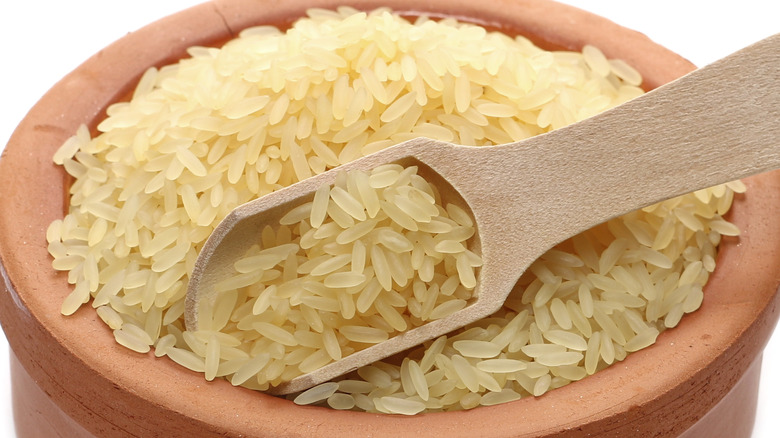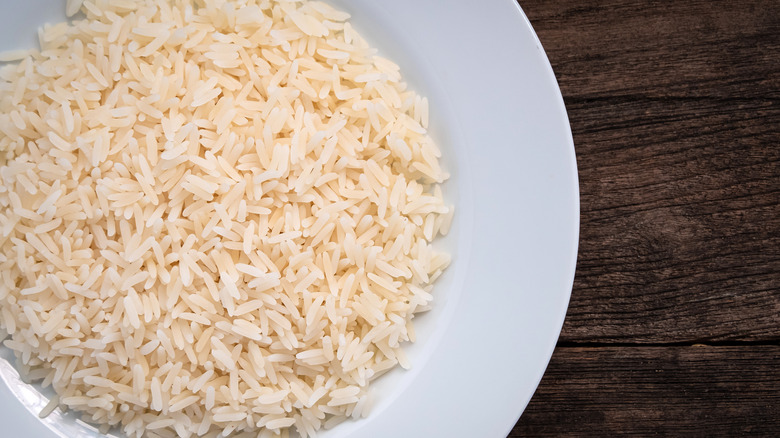What Is Converted Rice And How Do You Buy It?
Did you know that the exact same kind of rice can actually result in three different end products — white, brown, or converted — based on how the grain is treated after harvesting? Converted rice, also known as parboiled rice, falls somewhere in between the other two.
Rice is essentially a grass seed. It is wrapped in an inedible hull that is removed during processing. The endosperm is the part of the seed that is recognizable to us as a grain of rice. For brown rice, the bran that surrounds the endosperm is left intact, resulting in a grain that has a chewy texture and characteristically brown color; on the other hand, white rice has the bran removed, which exposes the white endosperm. Converted rice grains are soaked, steamed, and dried before the tough hull is removed. This lets some of the nutrients from the hull itself seep into the grains. The bran is then ground away, but the precooking process changes the texture and color of converted rice.
Converted rice is shelf stable, so you can usually find it in the rice aisle — it's smooth and looks like white rice with a brown or yellow hue — but it is not the same as instant rice, which is white rice that has been cooked and dehydrated. Confusingly, some instant or quick-cooking rice is labeled as partially cooked or parboiled, but if the rice is white in color and has around a ten-minute or less cooking time, this is dehydrated, cooked white rice, not converted rice.
How do you prepare converted rice?
While the label "parboiled" makes it seem like converted rice cooks faster, it actually takes longer to make than standard white rice. White rice takes between 15 and 20 minutes, converted rice cooks for 20 to 25 minutes, and brown rice will need around 40 minutes on the stove. No matter the type, resist the urge to mess with it as it simmers because stirring rice is a one way ticket to disappointing texture. You can treat converted rice more or less like you would white rice. However, converted rice grains maintain more individual integrity after cooking and don't usually get sticky or soggy, which makes them great for grain salads, soups, stews, and slow-cooking recipes. Converted rice uses a standard two-to-one ratio of water to rice when making a simple steamed pot — though it doesn't get as fluffy as white rice.
Because brown rice has more parts intact, it's higher in fiber, vitamins, and minerals; that nutritional value decreases significantly when it is milled into white rice. The treatment of converting rice imparts some of the benefits of the bran into the grain of rice itself, so the converted rice grains are more nutritionally dense than white rice grains. The type of rice you choose comes down to preference and what you are using it for. If you are looking for something texturally similar to white rice, but still packing the nutritional punch of brown rice, converted rice is a good option.


